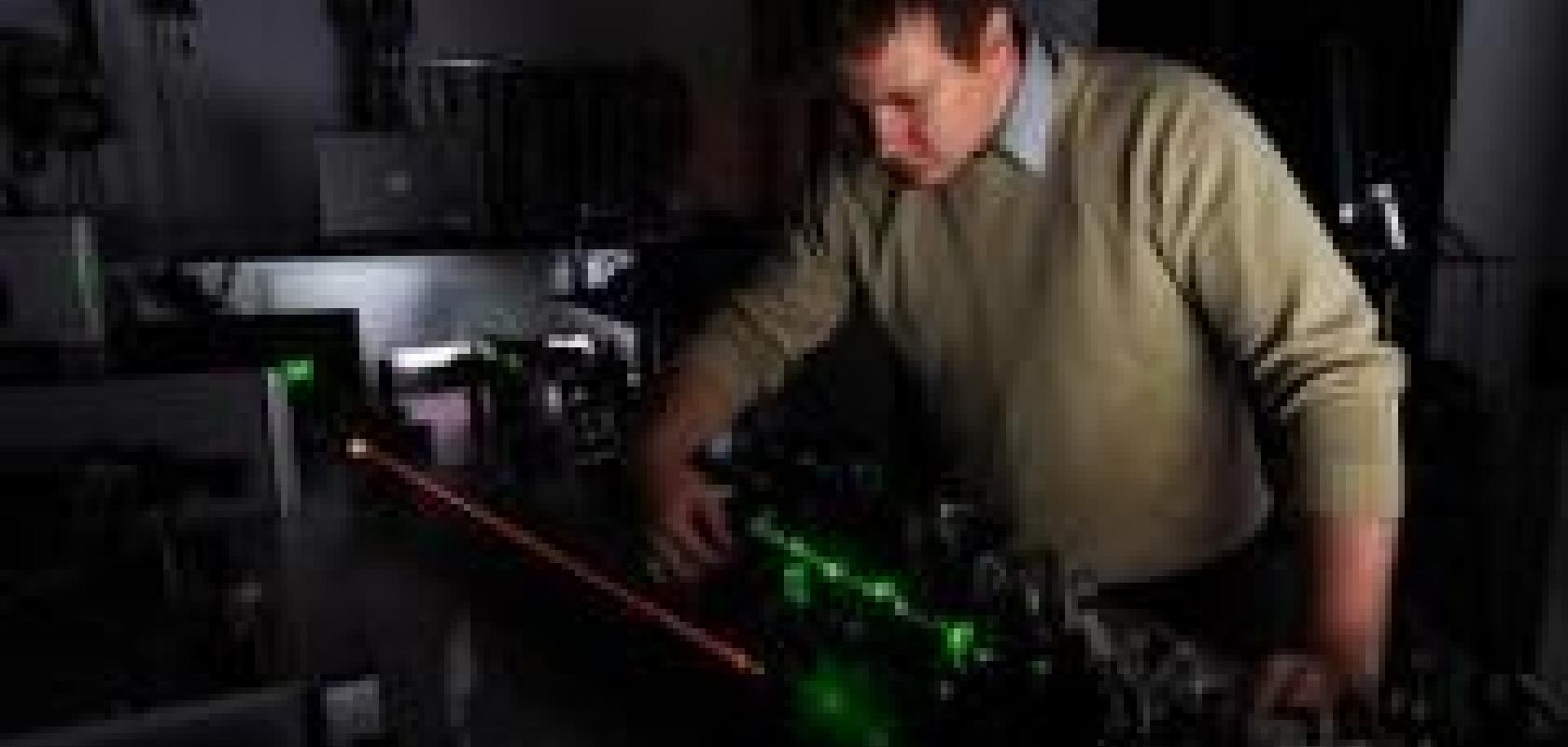An optical amplifier has been constructed that is able to generate 10 terawatt light pulses. The parametric amplifier built in the Laser Centre at the Institute of Physical Chemistry of the Polish Academy of Sciences (IPC PAS) and the Faculty of Physics of the Warsaw University (FUW) is extremely efficient and small enough to fit on a desktop.
The new femtosecond amplifier represents an important step towards construction of compact, portable, relatively low cost high power laser devices that could revolutionise anti-cancer therapies, for example.
‘Theoretically, the efficiency of parametric amplifiers can reach over 50 per cent. In practice, the best amplifiers of this type are operated at an efficiency of about 30 per cent. We have reached this level already now, and what's more, in a really compact device,’ said Dr Yuriy Stepanenko (IPC PAS), the chief constructor of the amplifier. He added: ‘In the coming months we are going to increase the amplifier's efficiency by another a few per cent on the one hand, while on the other we intend to increase the power of laser pulses up to a few tens of terawatts.’
Most lasers generating ultrashort pulses amplify light using sapphire crystals doped with titanium ions. An external laser is used to pump energy into the crystal, and a fraction of the energy is subsequently taken over by a laser beam being amplified. The method has numerous disadvantages. One of the major ones is that the crystals warm up strongly leading to adverse distortions of the cross section of the laser beam. As a result, the crystals must cool down virtually after each laser shot.
Non-linear optical effects can be used to construct amplifiers of a different type. These parametric amplifiers transfer effectively energy directly from the pumping laser beam to the beam being amplified. As the input energy is not stored anywhere, there are no adverse thermal effects, and the amplified pulses have excellent parameters. Parametric amplifiers can amplify light by hundreds of millions of times on an optical path of a few centimetres only. This means the system can be engineered in a relatively small package. The instrument from the Laser Centre of the IPC PAS and the FUW fits comfortably on half of a typical desktop.
The new amplifier will be used for construction of an x-ray source and to generate experimentally protons and secondary neutrons.
One of the long-term objectives of the research on parametric amplifiers is to generate laser pulses with a power of 200 TW and higher. Such powerful light pulses could be used for accelerating protons to energies that are useful in medical therapies, for instance to selectively kill cancer cells. The existing techniques for proton acceleration require construction of huge and high cost accelerators. High power lasers would allow for significant increase in availability of the state-of-the-art proton therapies, with simultaneous radical reduction of treatment costs for cancer patients.


